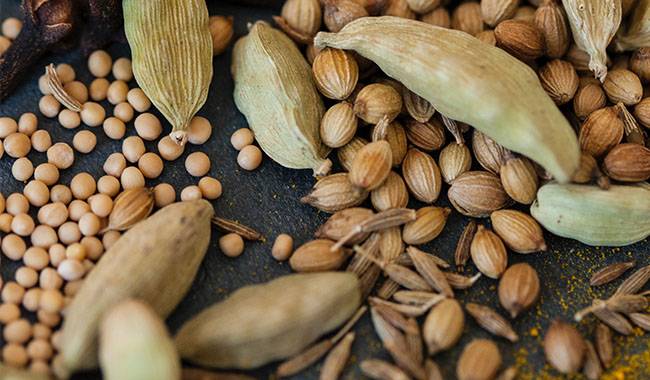
“Both late fall and spring are good times to start stratifying the seeds of many crops”. Many articles on seed propagation begin this way.
I suspect that many novice gardeners start to panic when they hear the word “stratification”: “We don’t need it!”. It is scientific ” I’ll try to explain it in simple terms.
In this article, 6 rules of seed stratification can be followed to successfully prepare for planting.
First of all, in autumn go for a walk in the park, in the woods, and there are people who walk in his home. You see, many plants have fruits and therefore seeds. Some of them are already lying on the ground.
The weather is still warm, the temperature is above zero, it rains often, it is autumn. It seems that the seeds that have fallen to the ground will definitely germinate, the conditions are favorable.
But it is a long process – they will stay there until spring. Only then will some of them (the ones that will appear in the soil layer) germinate.
This is the way nature takes care of plant reproduction during our harsh winter months. After all, if the seedlings start germinating in autumn, they will inevitably freeze to death. That’s why they have specially developed substances inside them that do not allow them to germinate early.
The thick shell is also a protection. Only during long winters, in wet and cold conditions, do the seeds get rid of these substances, the shell loses its strength and the seeds germinate in the spring.
In fact, this is natural stratification. It is worth understanding that seeds from temperate latitudes with frosty winters usually require such cold and moisturizing treatments.
Tropical crops do not have such protection from early germination. But they don’t need it, and it’s warm there too – healthy germination!”.
Stratification under home conditions – a process that mimics natural stratification. And to make it successful, you need to follow these rules.
Understand the peculiarities of seed stratification for a particular plant
It is worth taking the time to get the right information before sowing the seeds. But do they need to be stratified in order to take root? If so, how much and for how long? These time scales and requirements vary from crop to crop.
For example, seeds of the Tulip tree (liriodendron) take a year and a half! to germinate, mimicking the winter-summer-winter cycle, while lavender seeds need only one month of cooler temperatures. I suggest you, be sure to read the recommendations specific to your particular plant.
Normal “plants” are stratified outdoors and exotic plants are stratified in the basement or refrigerator.
Seeds from common plants in your area (you can stockpile seeds in bulk) can be safely sown in the open under winter, in pre-prepared beds of course, with special markers or just glued on plastic spoons or knives to mark where to sow.
However, if there are not enough seeds and they come from rare plants, then it is important to stratify them more purposefully. Sow seeds in containers or boxes in conditions that mimic nature (refrigerator or basement with temperatures near zero). More than 39°F (4°C) is not good, a little frost is acceptable.
Proper preparation of substrates for stratification
Stratification should be done in a sterile soil mixture or substrate. Molds and other fungal diseases, as well as pests, can completely negate your efforts for months.
In principle, any option is possible, but it is more convenient to stratify small seeds in a mixture of peat and sand, to which you can add garden soil (be sure to sterilize all components taken from nature), large seeds – in a mixture of peat, peat, peat-sand.
In addition, for home stratification of soil suitable for purchased plants, usually, no additional treatment is required.
Sometimes, those gardeners who stratify a large number of seeds at once, in order to save space in the refrigerator, do not sow seeds but put them in polyethylene bags with moist vermiculite, moss, or even moistened paper towels, and after a specified time, sow them in cassettes or containers.
Admittedly, this method is suitable for large seeds, which are easy to find in this substrate. And remember that economy is economy, but the volume of the substrate must be three times larger than the seeds.
Provide high soil and air humidity
Before planting the seeds in the substrate, it is advisable to soak them in water for a few days to activate the internal chemical processes. It is then necessary to maintain high humidity in the soil and air throughout the period.
Therefore, it is necessary to place the container with the seeds in a polyethylene bag. Or use a purchased mini-greenhouse for seedlings. If the seeds become dry, they should be sprayed with water from a sprayer. It is better to use soft, filtered water, or even better – melted snow.
Constant monitoring!
Check the seeds in the stratification process regularly, every 2 weeks. This is why a refrigerator or cellar is handy in this regard. Open the plastic bag, open the mini pots and check the seeds for mold.
If it appears, wash the larger seeds and treat the sown seeds with a fungicide (hydrogen peroxide diluted with water is suitable).
Sow germinated seeds in time
As soon as you see that the seeds have germinated, sow them in a soil substrate and place them in a warm place. If the seed has sprouted large, do it very carefully so as not to break it.
If you break it, the future plant will die. When the first shoots appear, the container should be placed on a well-lit windowsill, additionally lit with a special plant light (in winter, when the days are too short).
As you can see, there is nothing complicated or scary about in-home seed stratification. All that is required is attention, accuracy, and patience.







